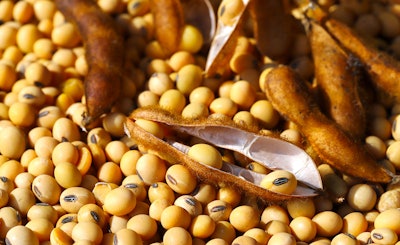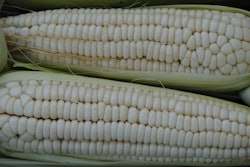
On July 14, the U.S. Department of Agriculture (USDA) issued its final rules to remove Soybeans of Other Colors (SBOC) as a grading factor for determining soybean quality.
Under the authority of the U.S. Grain Standards Act (USGSA), USDA established the soybean standards to help in the marketing of soybeans. SBOC has served as a grading factor for determining soybean quality and includes soybeans that have green, black, brown or bicolored seed coats.
In the last three to five years, however, there’s been a marked increase in the amount of soybeans that fit this qualification. As of July 2022, 25% of USDA certificates for U.S. No. 2 soybean or lower was due to SBOC, meaning the amount of SBOC in U.S. No. 1 soybean has increased threefold.
Unfortunately, because of SBOC, more and more soybeans were not making grade as No. 1 or No. 2 using current FGIS grading factors, making it harder for farmers to find markets.
SBOC was leading to rejections at either the origin or destination of these shipments. Furthermore, a high level of SBOC can result in monetary discounts on the crops.
"This issue that has been impacting the U.S. soybean market over the past two years,” Mike Seyfert, National Grain and Feed Association (NGFA) president and CEO, said. “The amount of seed coat variation resulting in U.S. soybeans has increased over this period and, as a result, more soybeans have been downgraded on account of SBOC."
In November 2022, USDA begin reviewing SBOC as a grading factor. In May, the agency proposed revising the U.S. Standards for Soybeans by removing SBOC as an official factor.
Seyfert said USDA recognizes the importance of consistent and widely recognized grade standards to the marketability of U.S. agricultural products.
"The final rule published today will help fulfill the intent of U.S. official grade determining factors and factor limits," he noted.
In comments submitted May 1 supporting the proposed amendments to the U.S. Standards for Soybeans, NGFA and 42 other agricultural groups noted the continued inclusion of SBOC in the soybean grade standard is contrary to the objectives of the USGSA.
Representatives of U.S. soybean producers and grain traders requested that USDA remove SBOC as a grade-determining factor for describing the quality of soybeans (e.g., U.S. No 1 Yellow Soybeans, U.S. No. 2 Yellow Soybeans, etc.).
The amendments supported by the NGFA and other agricultural representatives remove SBOC as a grade-determining factor but keep it in the standards as part of the definition of Yellow Soybeans.
Importantly, at the request of the Grain Inspection Advisory Committee, the Federal Grain Inspection Service conducted a study that found no significant differences in official protein or oil content in SBOC.


















